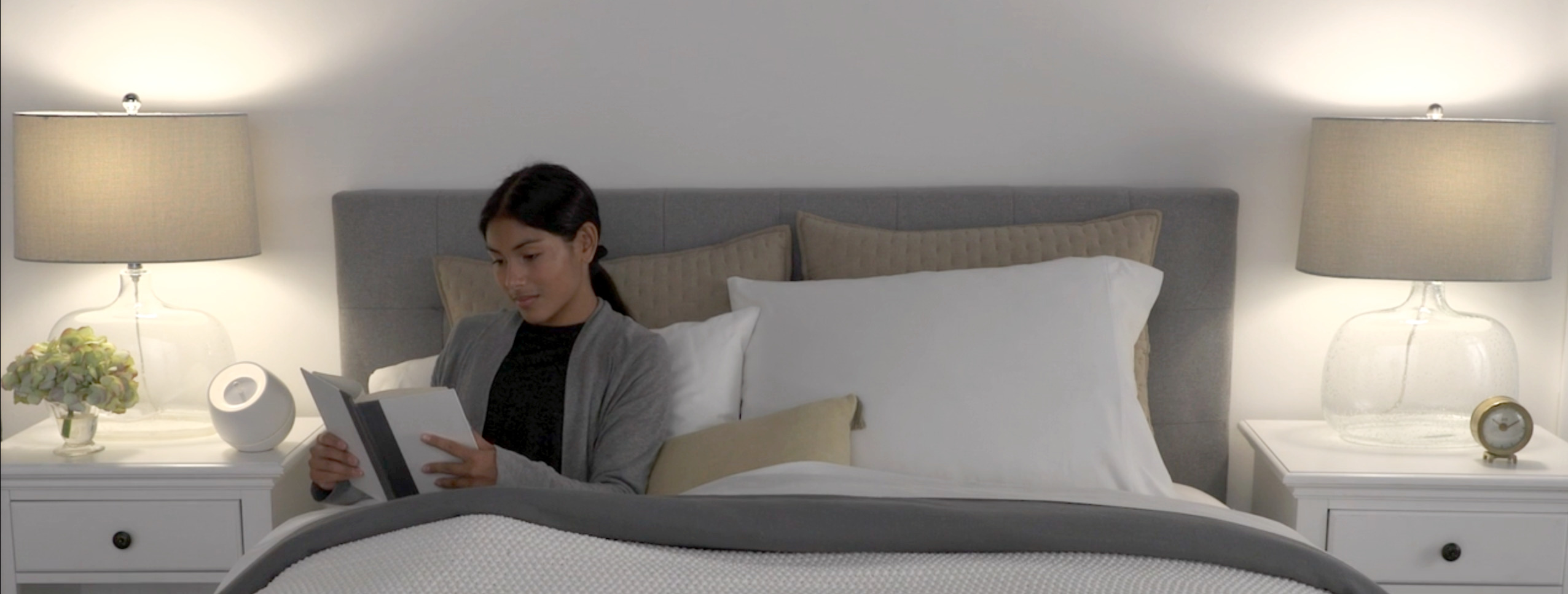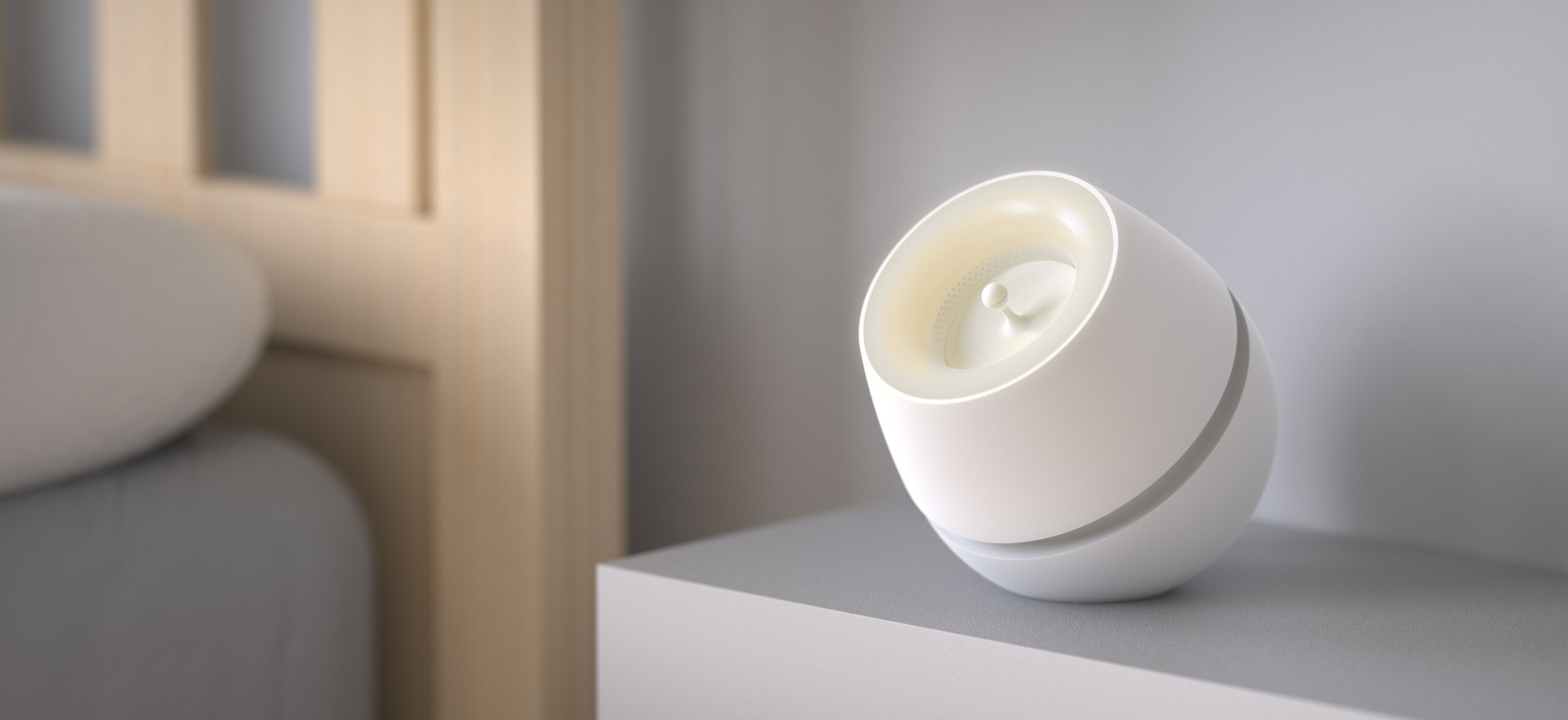
Sharper Image White Noise Machine – 2020
We partnered with Sharper Image to develop a white noise machine that uses the movement of air to create a wide range of tones and volumes without the use of speakers or circuitry. The project’s scope ranged from engineering and design for initial concept development and validation, through to final industrial design. Through prototypes we explored solutions for manipulating fan-driven air to create a wide range of pleasing sounds, and then integrated the most successful methods in a beautiful and peaceful object that can live comfortably on a nightstand.
The pitch of the Noise Machine’s sound is adjusted by sliding the inner core to increase or decrease airflow through the upper vents. Volume is adjusted by rotating the outer housing to increase or decrease airflow through the lower vents.
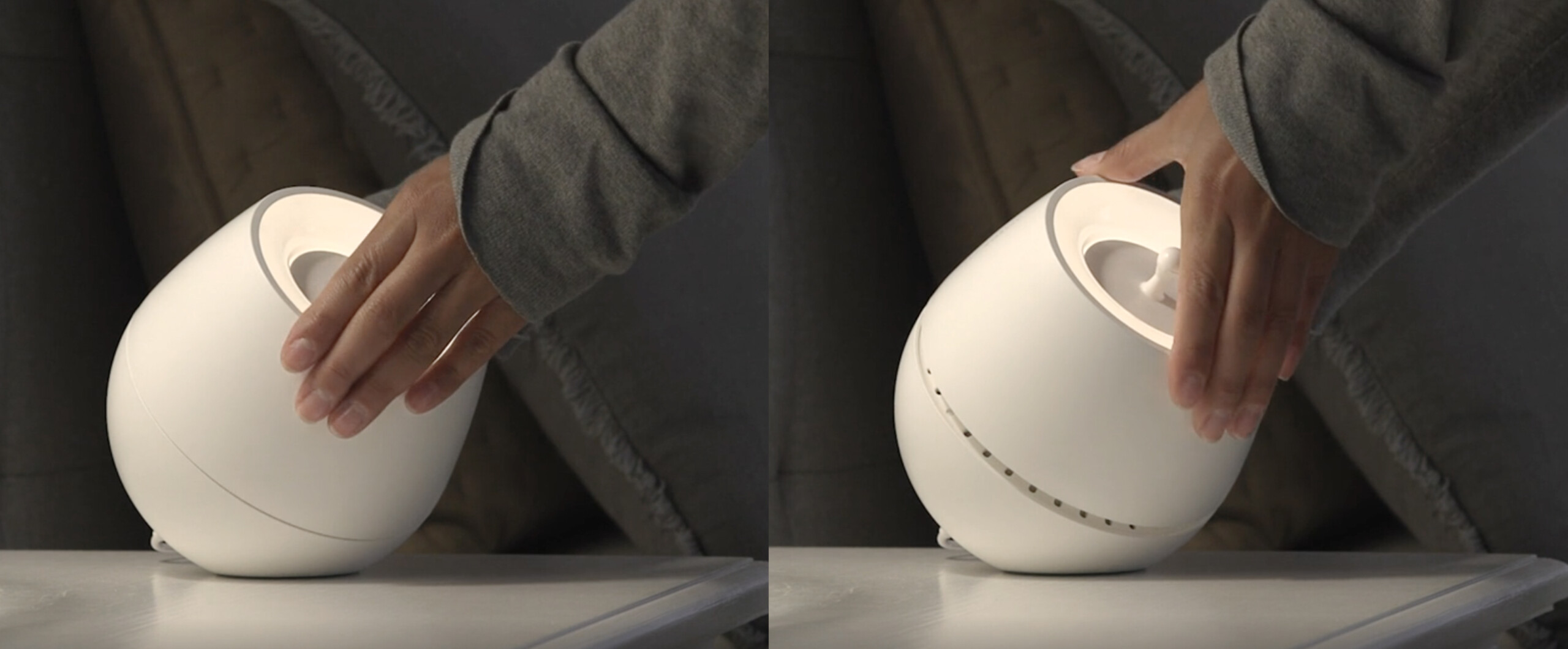
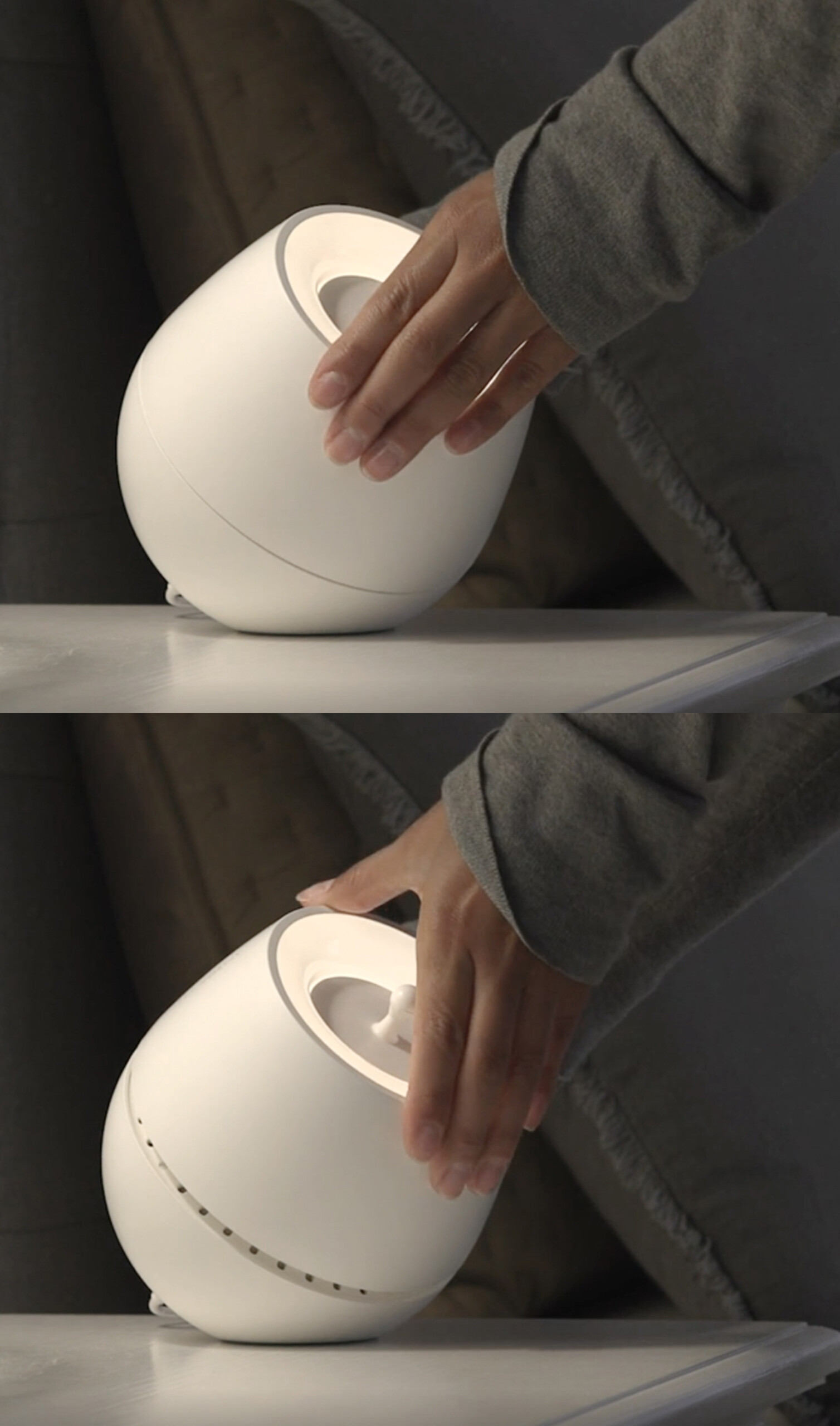

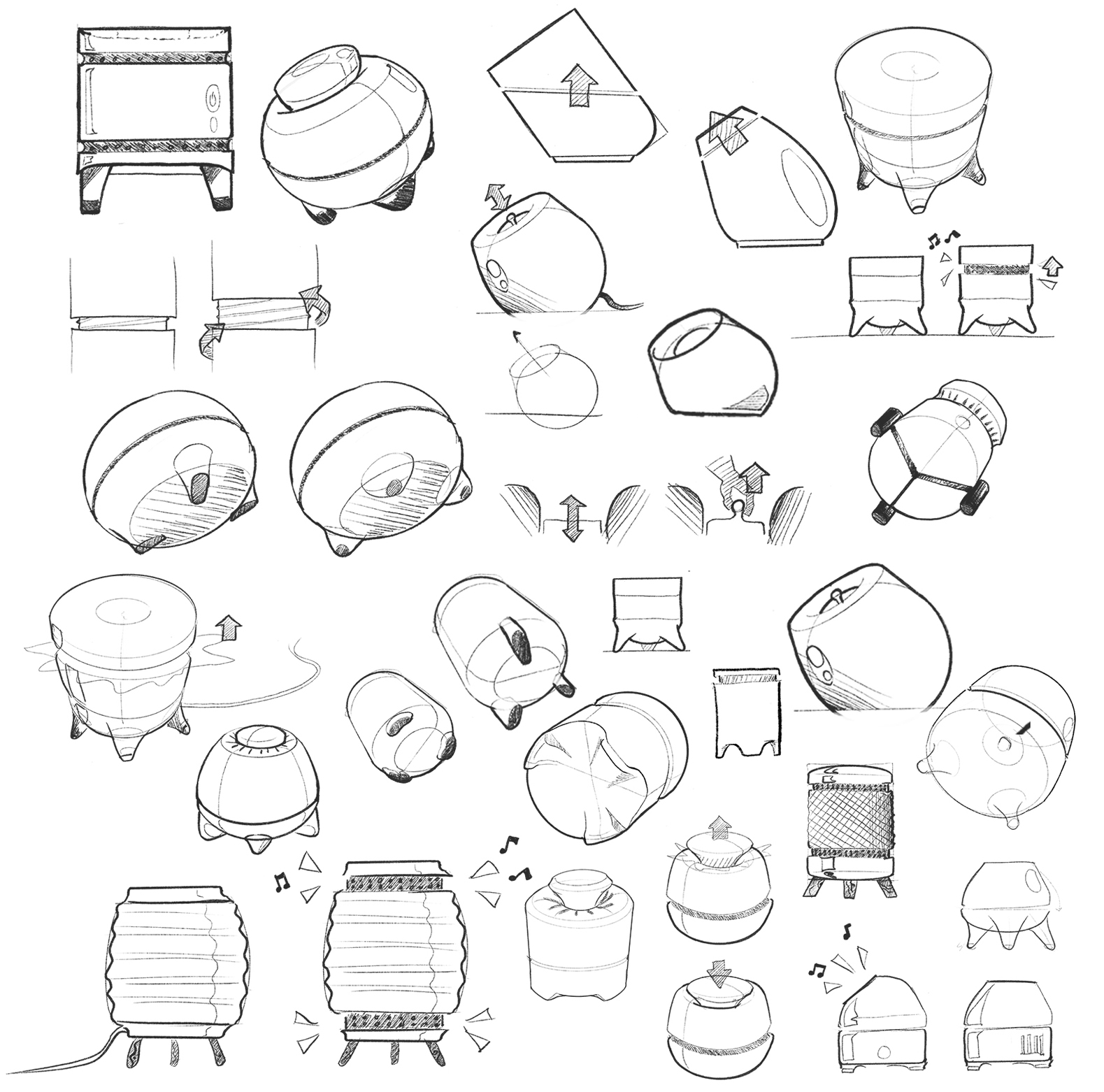
Design and Engineering
Several factors were considered during initial design and engineering explorations. Fan type, direction, speed, and location, in addition to venting size, density, and location relative to the fan. We rapid prototyped several housings with swappable parts that could be compared for sound performance, level of adjustment, dexterity of operation, and overall experience.
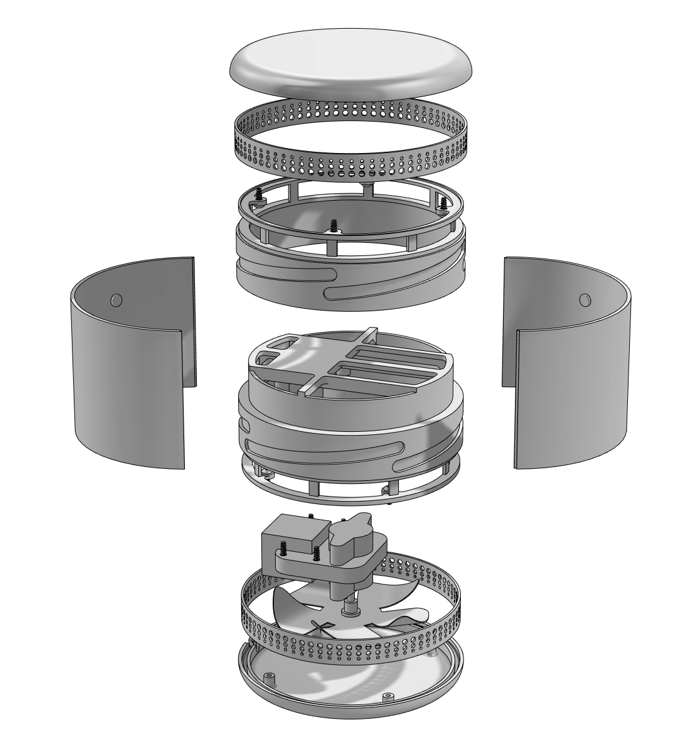
Design and Engineering
Several factors were considered during initial design and engineering explorations. Fan type, direction, speed, and location, in addition to venting size, density, and location relative to the fan. We rapid prototyped several housings with swappable parts that could be compared for sound performance, level of adjustment, dexterity of operation, and overall experience.
We 3D printed several vent patterns to compare their performance with different fan configurations, allowing us to tune and refine the final sound quality and characteristics. The vent pattern rings could be swapped between prototypes that had various fan locations, directions, and proximities to vented areas. We also used these prototypes to investigate ways to shroud or duct the vents in order to make the finished product look sleek and clean.
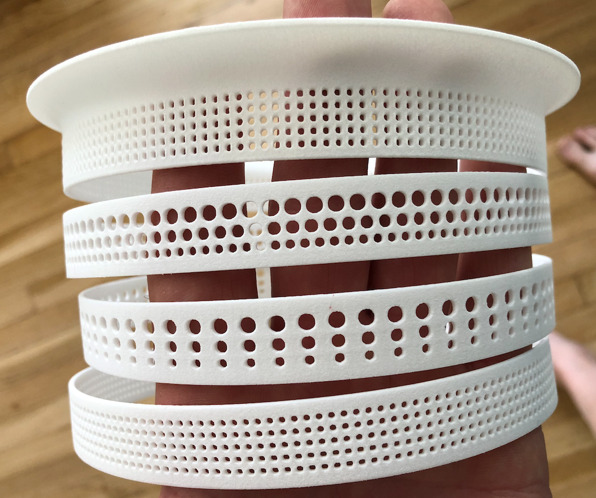
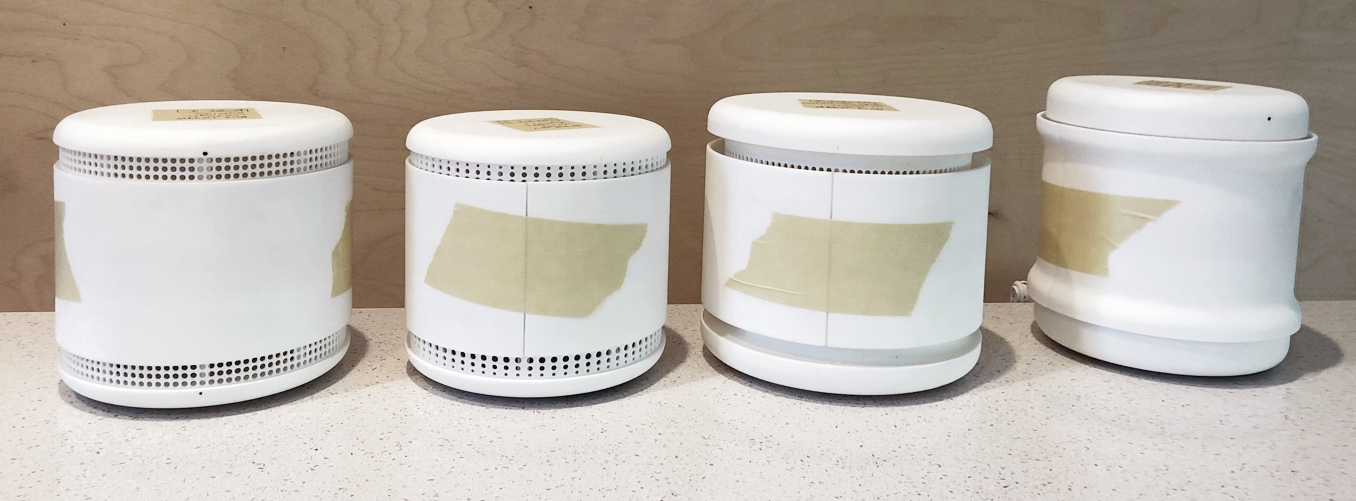
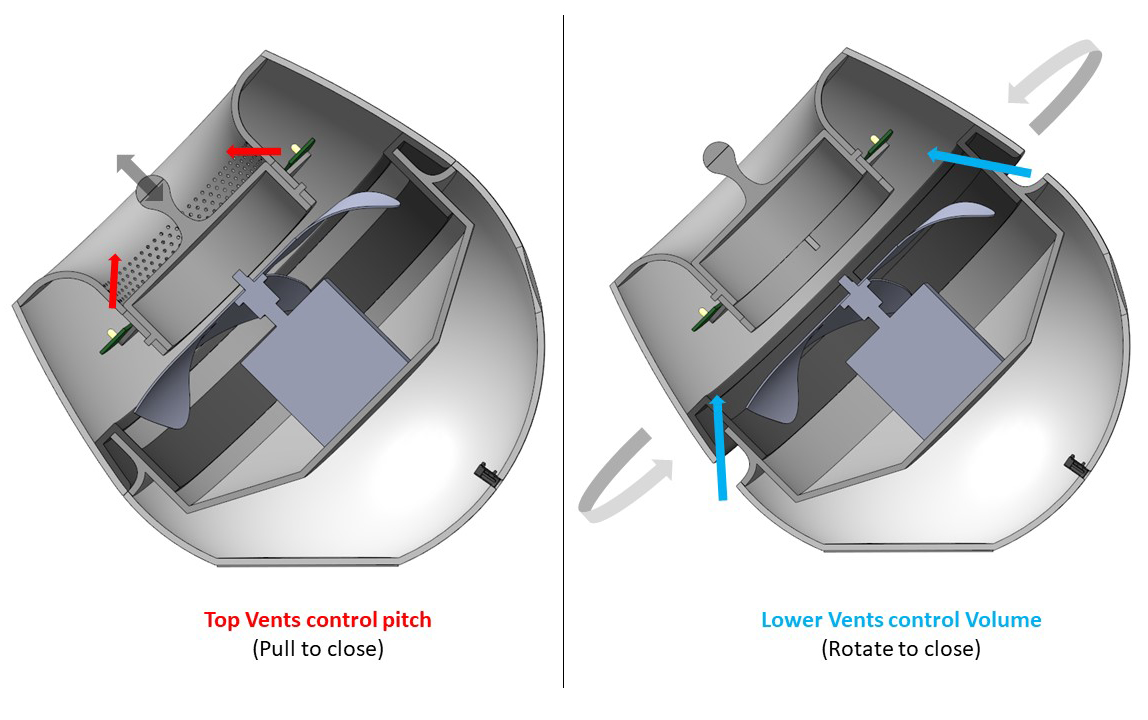
Physical testing led to a final architecture with a ducted vent ring around the outside perimeter of the housing, near the fan, that allows for low visual impact yet good volume control. The top venting area, responsible for pitch control, is presented to the user in the middle of the night-light ring and is manipulated by a smooth sliding baffle that obscures or exposes the central venting both physically and visually.
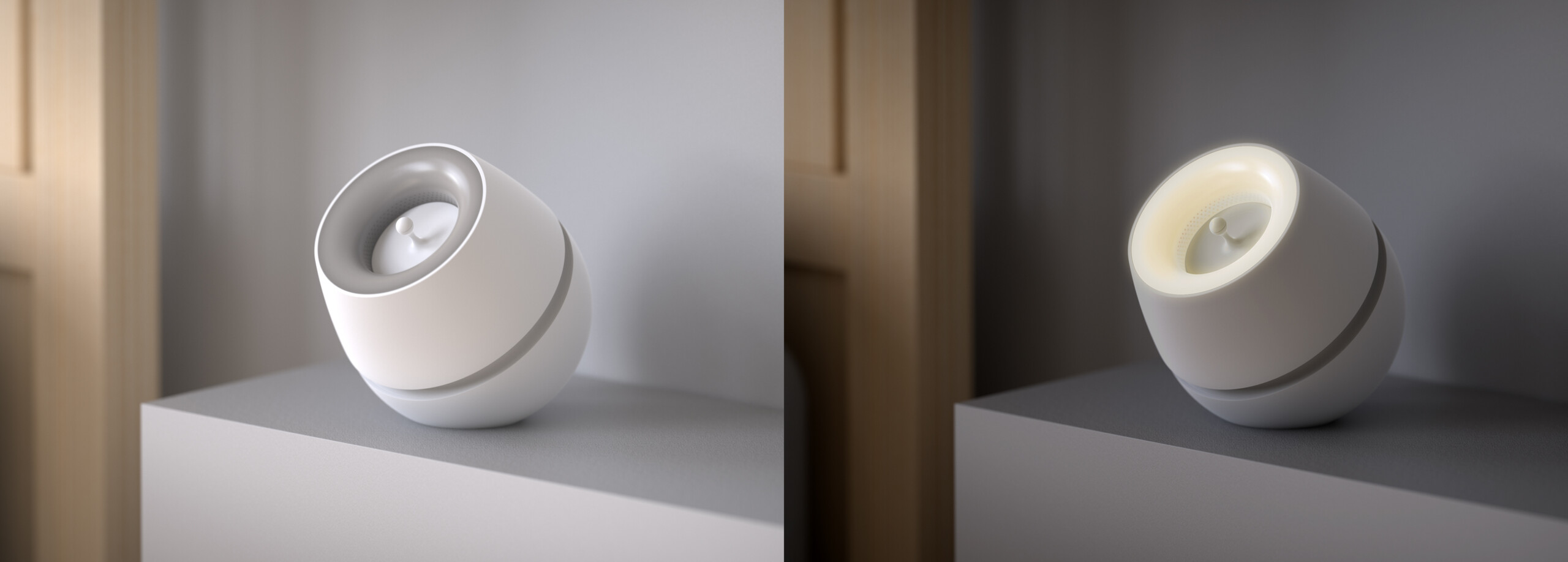
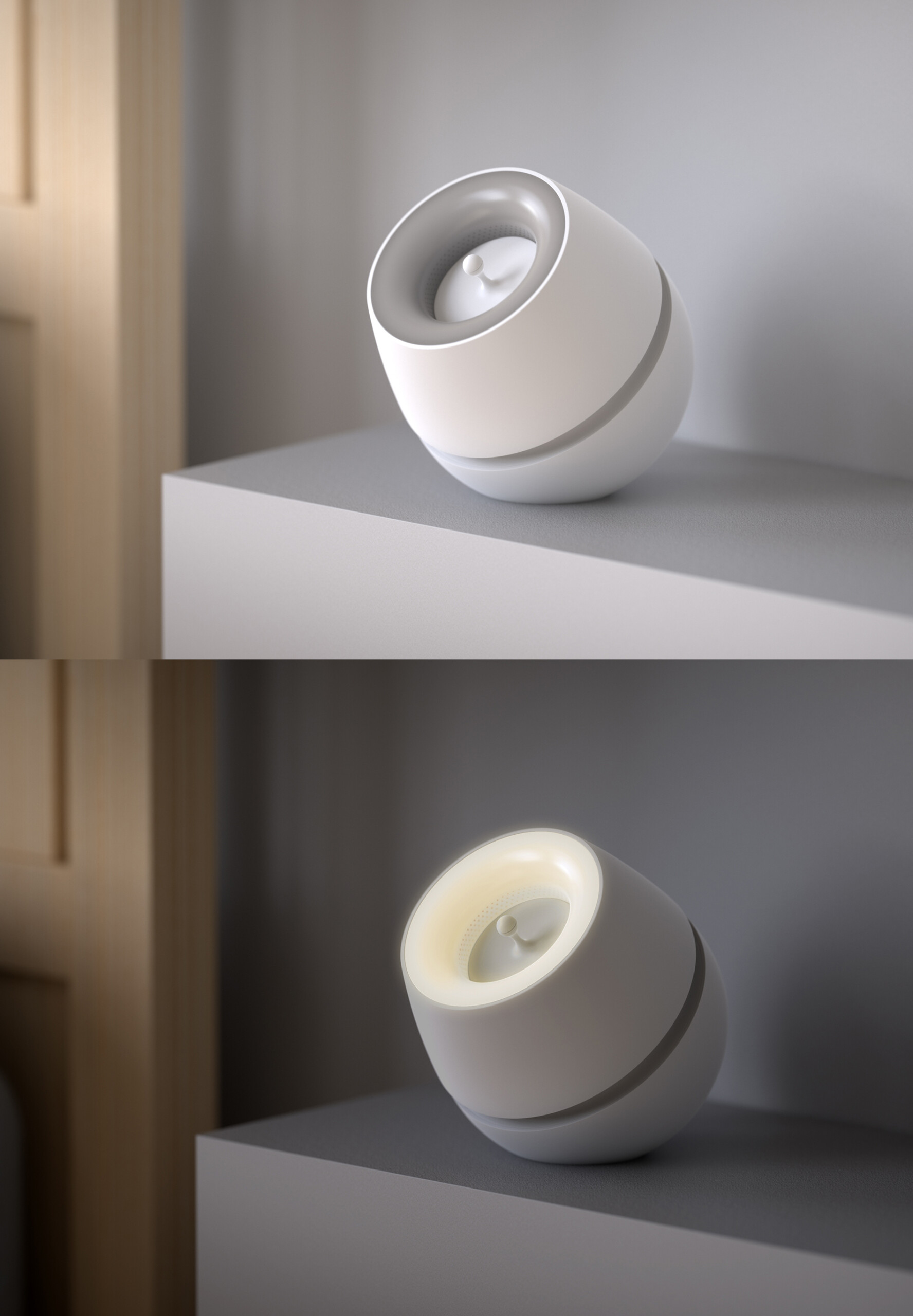
The end result is a clever design that is soothing to the eyes and ears. The gentle surfacing on the housing blends well with bedside objects, the integrated light provides warm ambient light while winding down for the night, and the adjustable white noise masks background sounds like traffic and HVAC systems to promote disturbance-free sleep.
